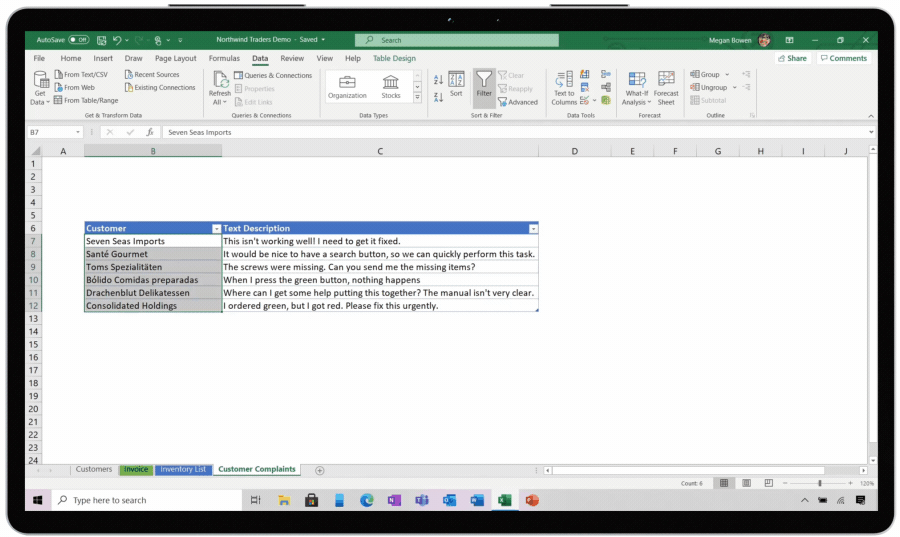Nik Milanovic Contributor
Nik Milanovic is a fintech and financial inclusion enthusiast, with a decade of work across mobile payments, online lending, credit and microfinance. The opinions expressed in his articles do not reflect those of his employer(s).
More posts by this contributor
Access to information in the United States is fragmenting along social lines. This goes beyond the fuzzy, qualitative feeling many of us have that people can’t agree on key issues anymore — data show that people are increasingly breaking into disconnected ideological camps. While this is commonly viewed as a left/right issue, the reality is much more pernicious: It is a rich/poor issue.
Americans today are exposed to fundamentally different facts based on their news sources. Data are often arranged to fit narratives rather than the other way around. This effect spans the political spectrum: It is as relevant to The New York Times as it is to Fox News. One of the contributors to this information split is the rise of site-wide paywalls, which divide access to information along socio-economic lines.
As one magazine editor eloquently puts it, “The truth is paywalled but the lies are free.”
It’s time for us to think critically about how we can build business models that reunite information bubbles, so that people consistently get access to all sides of the story.
Ringing the division bell
Media polarization is not a new phenomenon. Studies have shown for over a decade that, when it comes to news, people have been dividing themselves into information camps. Social media platforms — quickly replacing publishers as the “front end” of news — act as an accelerant, using likes and reads to pattern-match content to readers. However, these studies often address the left-right split; little is said about the more fundamental difference in beliefs driven by a difference in ability and willingness to pay for news.
The pivot by major publishers to erect site-wide paywalls is a recent phenomenon, an answer to the “grand ad-supported content bargain.” These paywalls have grown in popularity, driving people to subscriptions as an alternative to ads revenue. In doing so, they have undoubtedly helped stem (and maybe reverse?) the decline in news revenues driven by the internet.
How bad has this decline been? Just see this OECD visualization of how circulation, titles and revenues have dropped over time.
As Rupert Murdoch said, “… sometimes rivers dry up.” From 2007-2009 alone, the U.S. saw a 30% decline in newspaper publishing. Staff layoffs have become the norm for smaller and midmarket news services, which find themselves driven to consolidate into larger news orgs in order to bring down prices and expand the reach necessary to attract ad spend.
The message is clear: If people want to continue consuming news, they and media companies need to work together to develop a business model that can support it. Yet, as news bookmarking service favor.it notes, “There is now a real cost to the user associated with acquiring accurate, insightful and well-produced news. [ … ] Exacerbating the problem is the fact that there is now serious competition to real news. Free, less-reliable news sources and aggregators that can push articles into a [F]acebook Newstream that go viral in a matter of seconds whether they are completely true, or properly researched, or not.” The data bear this out: an MIT study across 126,000 stories found that fake stories proliferate on average 6x quicker than true ones.
The new iron curtains
Across six European countries and the United States, the average price for paywalled news is about $15.75 per month. In a time where half of Americans are working low-wage jobs and many are experiencing a severe savings crisis, most don’t have the available funds to shell out for a $15 monthly news subscription — much less a subscription for each outlet they want to access. Free news and clickbait headlines on social media, much like fast food, are the easiest and most freely available options to a swathe of people who have neither the resources nor the energy to do the fact-checking for themselves.
A perennial suggestion is that outlets syndicate their content into a “Netflix for news” bundle. Indeed, aggregator initiatives like Apple News have grown to over 100 million users. Yet this still doesn’t solve a fundamental problem, which is that, in an age of instantly available free online media, most people are not willing to pay even for bundled news.
As Don Richard, senior PM at Shopify, puts it, “I just don’t think the mass appeal for a text-content bundle is as high as many tech folks believe it is [ … ] most people view text content as a less-valuable medium than TV and music — valuable being defined as worth paying for based on your personal needs and preferences. And when people have other expenses they have to pay for, paying for a text-content bundle will be hard to justify. Since a text-content bundle doesn’t exist today, the money for a text-content bundle has to come from somewhere else in the monthly budget for most people. That means the bundle price has to take share-of-wallet over something else. Basic needs (food, shelter, utilities) aren’t being reduced for a text-content bundle.”
So we end up with two fundamentally different types of media: On the one hand, free media, supported by independent journalists, freelancers and threadbare content teams; on the other, paywalled media, supported by more robust fact-checking teams and editors. As Robinson puts it, “It costs time and money to access a lot of true and important information, while a lot of bullshit is completely free.”
Coming back to the accelerating polarization of the American public, this media divide is not without consequence. People can always reasonably disagree about beliefs and ideas, so long as they have the shared context of facts. They cannot have productive debates if the facts are in-question.
This is where claims of “fake news” originate: Dividing the world into free facts versus paywalled facts means we are increasingly talking past each other. As favor.it puts it, we’re “moving toward a situation where there will be haves and have-nots in the very critical area of having basic, accurate information about what is going on in the world.”
Where do we go from here?
It is clear that the internet media model predicated on paywalls needs to be revisited due to these shortcomings. But what are the alternatives? Targeted ads have been shown to have their own disadvantages and provoke reader ire.
While this is not a comprehensive answer, here are a few suggestions:
Free facts, upsold details. Pull the key facts out of news stories and make them freely available to people, upselling the deeper and richer storylines. TechCrunch has found an elegant middle-ground of this format: The core news stories on the website are free, while the value-added analysis, investigative deep-dives and richer opinion content are available to subscribers.
The New Paper is another, newer service experimenting with a condensed version of news headlines to combat newsletter and information fatigue (albeit one that still plans to charge $5 monthly). This is something being spearheaded by the rise of platforms like Substack today for independent journalists; content producers with a good following or smart coverage can create self-sustaining businesses.
Could newspapers take a page from Scandinavian ticketing practices and charge based on income? A tiered subscription price adjusted to payroll could allow wealthier readers to create a public good for poorer ones.
Yet, when people pay for news, they should not just be paying for stories — they should be paying for the knowledge that an army of editors, fact-checkers and investigative journalists uncovered the truth behind a story. That is a good that Substack likely cannot provide.
Develop a publicly available, consensus-driven score for fact-based news outlets and prioritize this score in algorithms. The way we access information has changed; aggregators now sit at the top of the news funnel. This has created a significant user surplus — people are able to locate information by story, without being constrained by outlet. However, it has also created an ad-revenue-driven model that prioritizes unique views, which are in turn driven by people’s search for sensationalism and confirmation bias in media. Search engines, social media platforms, and aggregators should come together to develop a public, transparent scoring mechanism for information quality in news and implement that to drive more viewers to more trustworthy sources. An independent rating for factuality that becomes a key input into search and social rankings could significantly help curb the virality of fake news stories, but it would need to take into account the sometimes long half-life of the truth.
Public initiatives. The government needs to re-enter the business of protecting the quality of journalism.
One step is for the FCC to reintroduce the Fairness Doctrine, which required journalists to represent both sides of a given story.
Another is to increase funding for public news sources of all stripes: liberal, conservative, etc., and for those sources to submit to routine information quality audits. Every area in which we’ve taken public institutions and allowed people to pay their way out of the default option — healthcare, education — has led to wild underinvestment in the public option; news is no different.
The library model is surprisingly effective for those who select it as an option: well-funded and maintained public libraries still provide an amazing, information-rich resource to those who avail of their services. Digitizing library resources and allocating partial budget to make information not just available, but also surfaced at the right contextual moment could combat misinformation.
A last option would be to implement information quality scores, similar to public health and safety standards. A score could be as simple as an A-F grade on a restaurant or a calorie count on a fast food menu.
Micropayments and stories a la carte. As long as news media has been dealing with internet-related pressure, technologists have proposed micropayments as the answer. The desire to read an individual news story is stochastic, while media subscriptions are continuous. Few people, myself included, have the willingness to submit to a monthly or annual news subscription just to access the content in one article. Publishers should offer individual stories, sold in exchange for micropayments of, for example, $0.10 per story (10x the payout of some publishers to their content creators). Digital wallets embedded into browsers (see Metamask and Brave Browser as examples) can support these micropayments fluidly, either with opt-ins for each story or working in the background, to allow readers to move seamlessly around the internet, so that readers aren’t asked to pay for each story. As futurist Jaron Lanier noted 10 years ago, “Digital technology … unsettled the so-called ‘creative class’ — journalists, musicians, photographers” when access to information became free; micropayments (and royalties) could help rebuild that class of jobs. With that said, there’s a discrepancy between the amount that periodicals spend to publish a story (e.g., $100) and people’s propensity to pay (e.g., $0.10); unlike songs and movies, people only consume news stories once.
Alternative revenue streams. Media companies should again explore whether events, classifieds, paid editorials, in-depth research and other information-related services could allow them to offer “just the facts” as a loss leader. The New York Times, famously, launched The Daily podcast and spun off its cooking and crossword products into standalones. Publications should reinvest in hyperlocal journalism with local sponsorship.
The truth is that, as site-wide paywalls continue to be erected, there will be a real divide of news into haves and have-nots. There is no silver bullet solution to this problem. The public benefits from open news; factual reporting creates positive externalities. Yet we have not found a commercial structure to support these organizations. The answer is probably a combination of the above along with other revenue streams (including, yes, ads). But it is paramount to the strength of our social fabric that we continue to search for that answer.
We should ask ourselves what surplus is created by good news coverage, by deep investigative research and honest reporting? Who benefits? At this critical juncture when the stress fractures in our fragile democracy are beginning to show, it is obvious that all of us benefit from that surplus as a society. So let’s work together to support it, for the sake of society.
Thank you to Danny Crichton, Danny Zuckerman, Jason Wardy and Orion de Nevers for reviewing this piece.
 Read Full Article
Read Full Article









